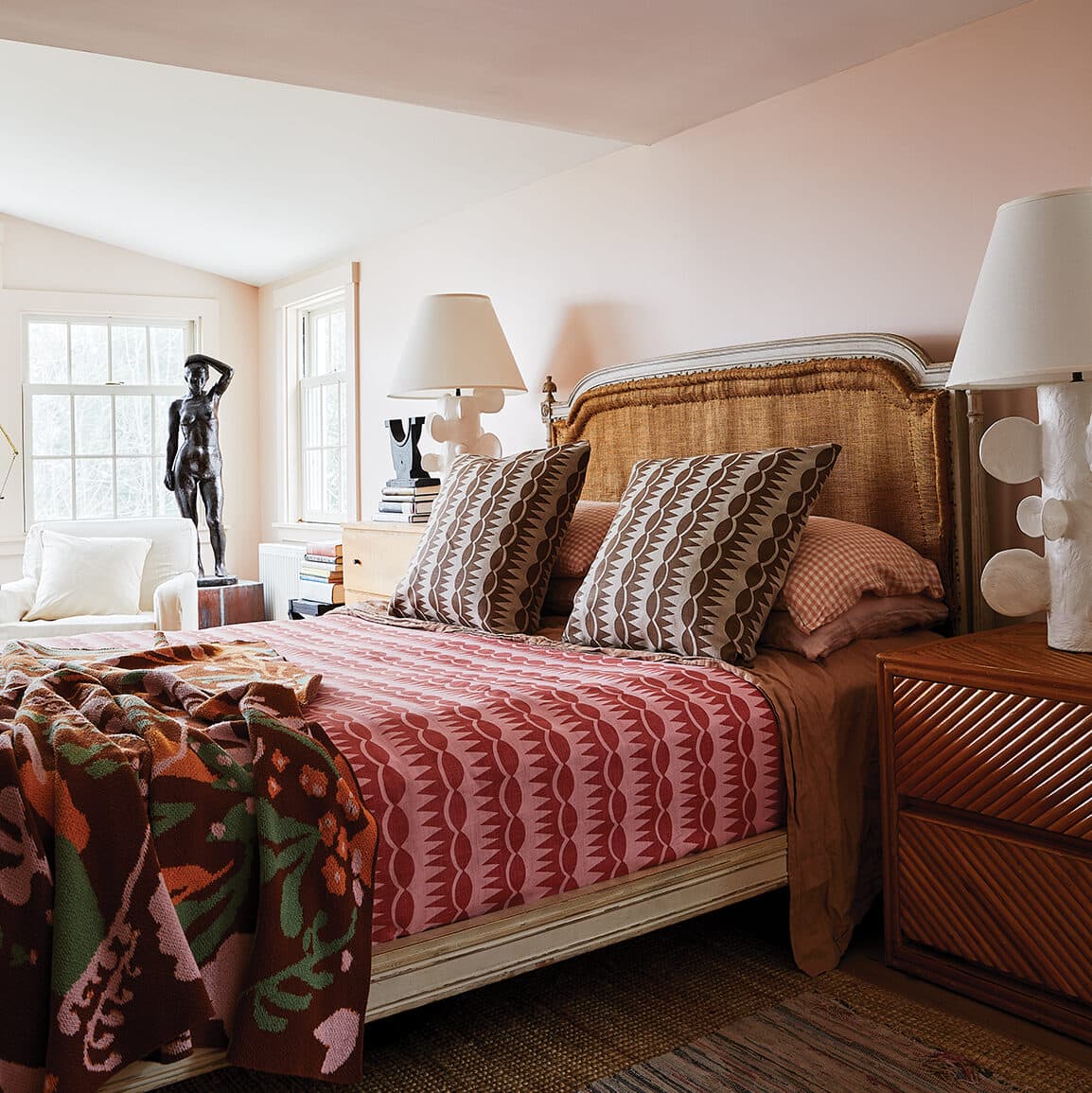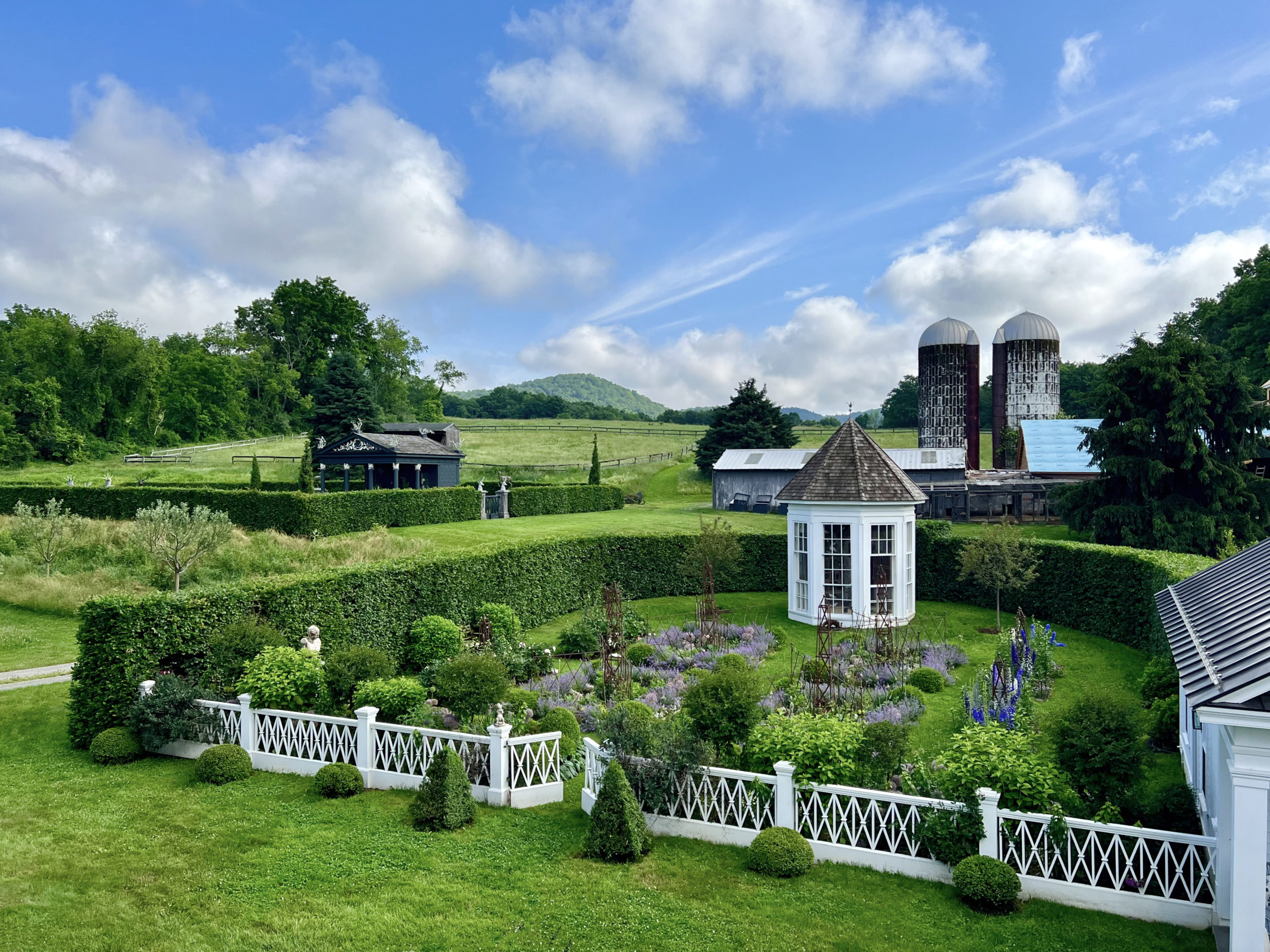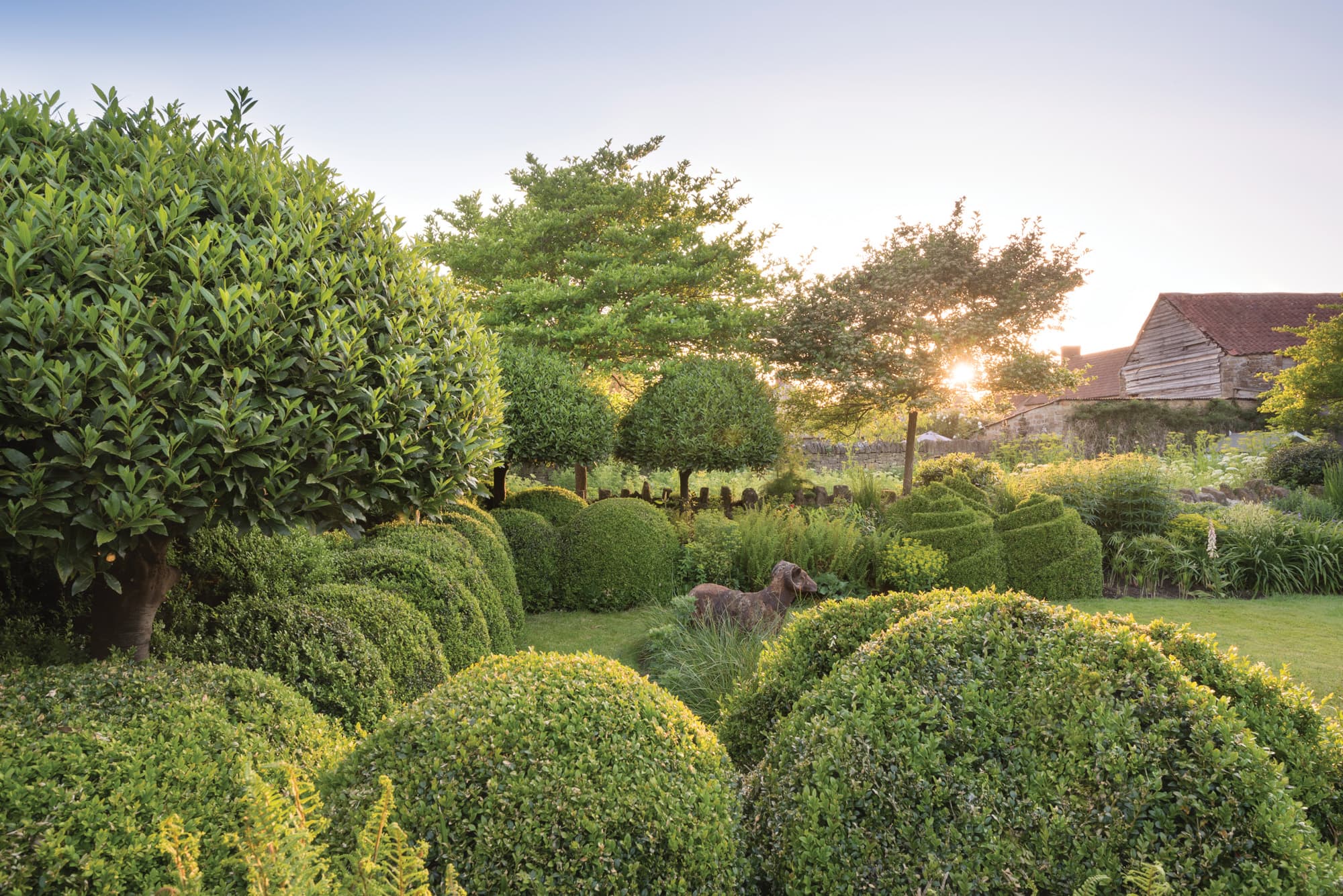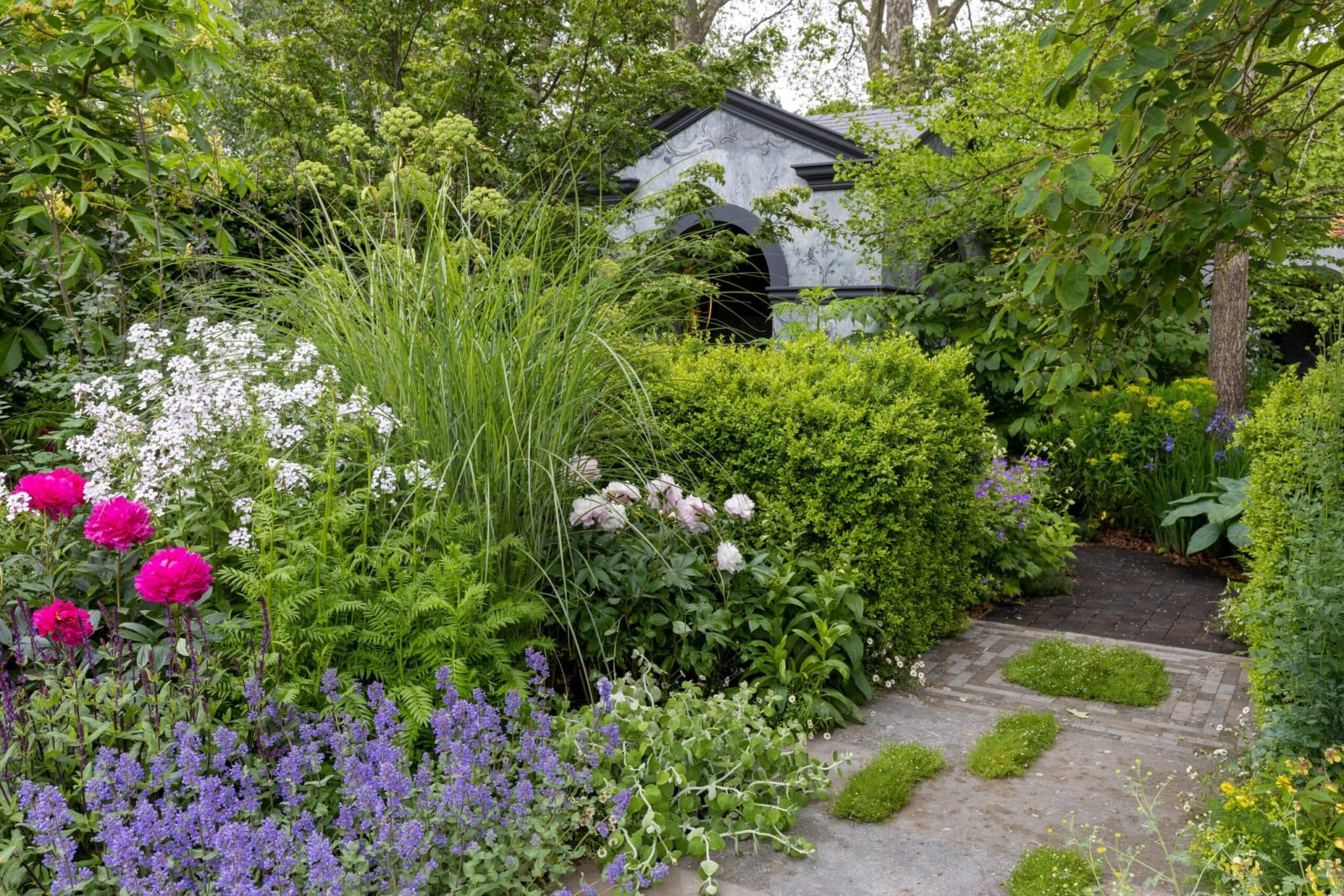A garden hedge might just be the prettiest privacy screen that nature has to offer. But they’re not just for keeping prying eyes out of the front yard: A well-placed hedge can also help dictate the overall layout of a garden, allowing for different pockets of bliss and surprise throughout. Thinking of planting your own foliage fencing? We chatted with Anthony Bellomo, landscape architect and owner of Orangerie Garden + Home in Millbrook, New York, to get his advice for making the most of a fabulous hedge.
Understand the purpose of the hedge.
The first step in planting a hedge is to determine its purpose. In ancient times, hedges had mostly pragmatic applications, used by farmers to create wind breaks or natural fences to protect growing crops. They eventually took on a more ornamental purpose, becoming a staple garden design. Many of the classic gardens in France, and Italy, and England featured formal hedges, oftentimes clipped in a way that created an architectural framework for other plants. Today, there are two main reasons that hedges are used: One is to create privacy, and the other is to add a sense of formality or structure to a garden.
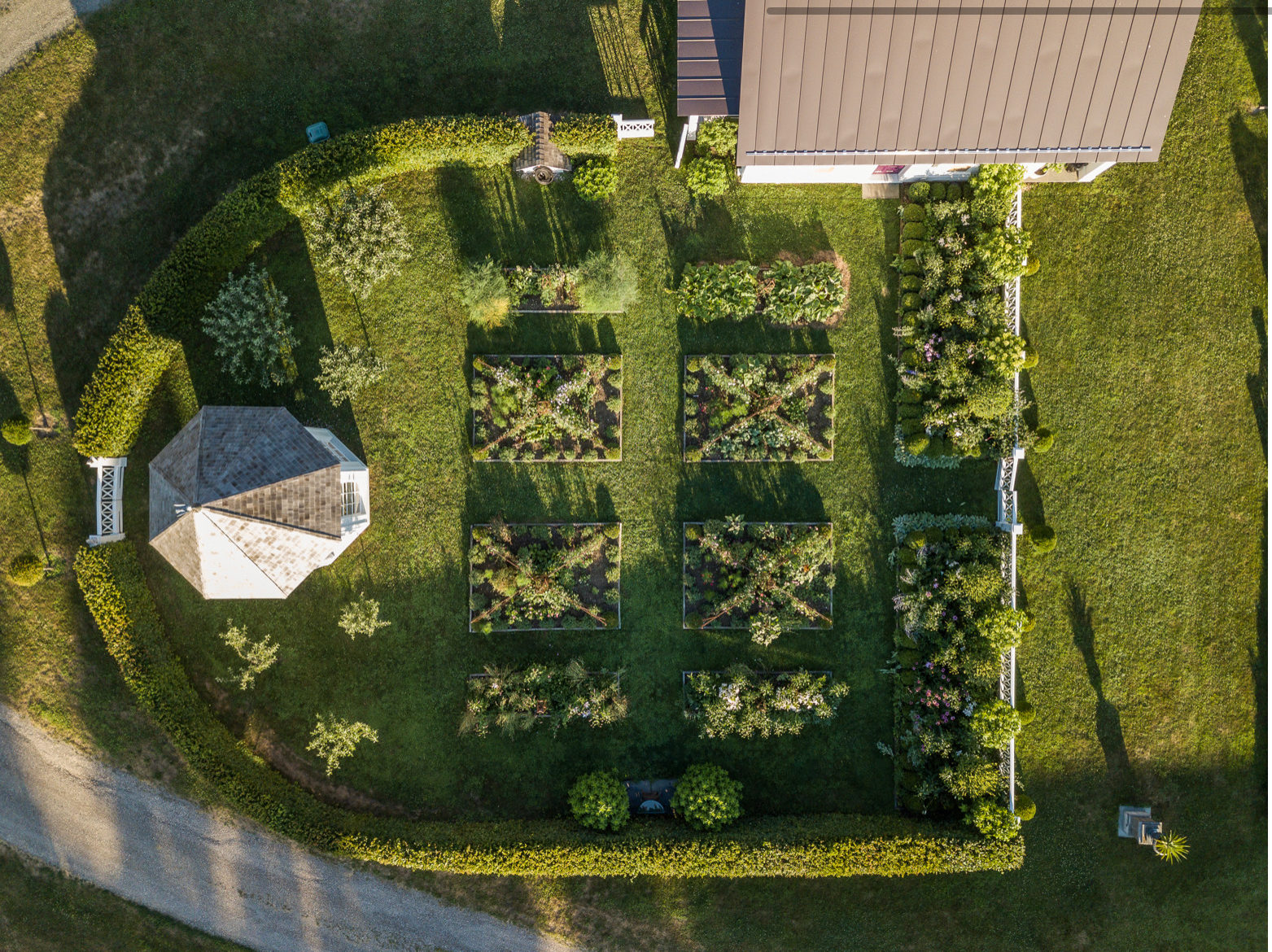
An aerial view of Bellomo’s Clove Brook Farm shows how effectively a hedge can define a garden.
COURTESY OF ANTHONY BELLOMOKnow when it’s time to give your hedge a trim.
You’re essentially training the hedge to fulfill a certain width and height, says Bellomo. Oftentimes, the plant material used for a hedge wants to grow larger than the size of the hedge you want for your garden. As soon as the weather breaks, temperatures rise and the days get longer, those plants will start pushing outward, growing bigger and looser. Clipping gets it all back in shape keeps it neat and tidy. Bellomo recommends clipping once at the start of the summer season, and a second time in August as it starts to lose its shape again. “It can take a couple of days to clip a large hedge,” he notes.
Precision is a key decorative component.
Bellomo believes that most beautiful hedges are the ones that are very precisely clipped. “When a clipped hedge is razor sharp and clean, it really is sublime in the garden because not only does it give this structure that we’ve been talking about, but it creates these walls that then have other plants within them,” he says.
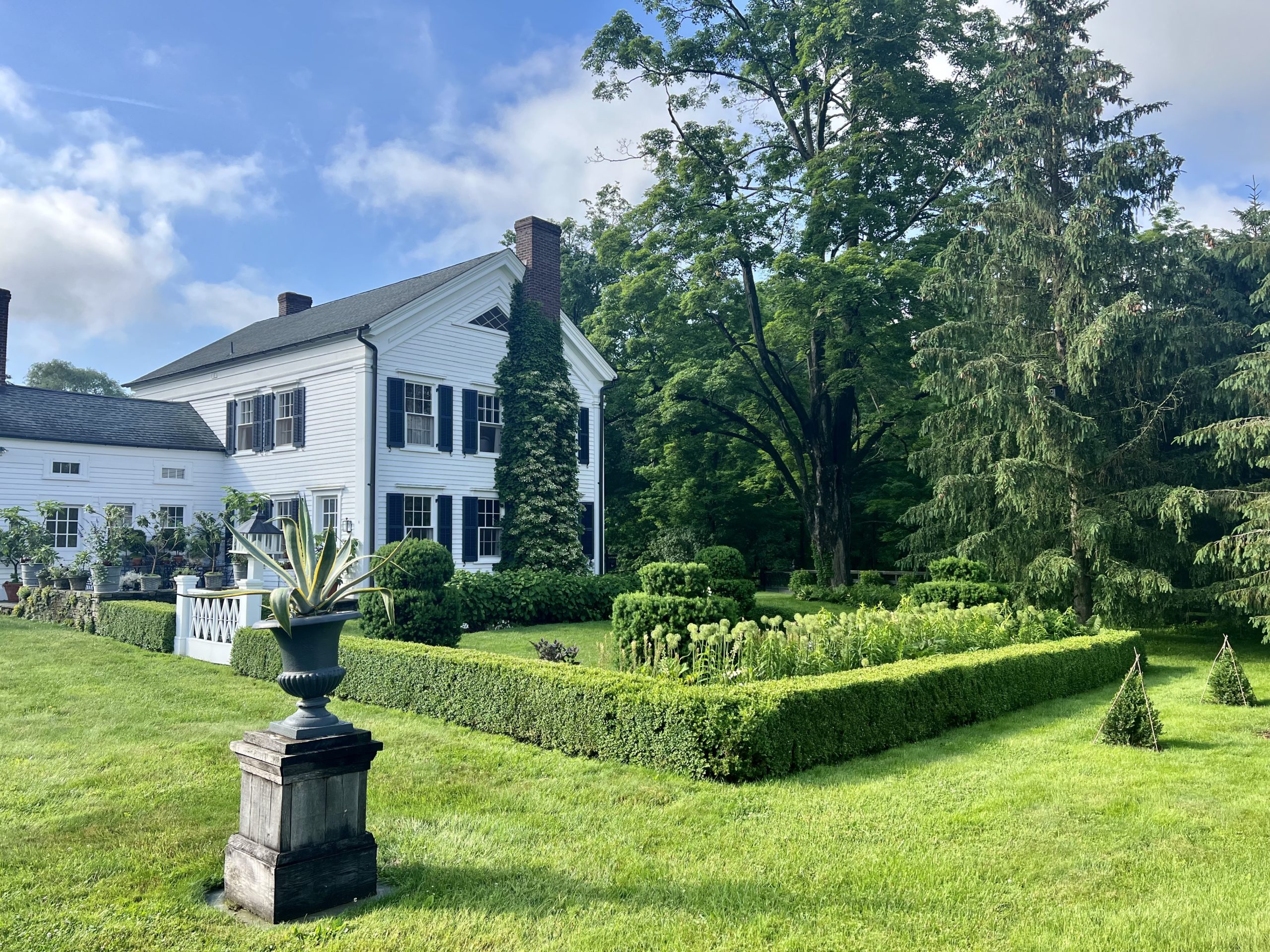
A low evergreen hedge of clipped boxwood surrounds a garden adjacent to the house.
Courtesy of Anthony BellomoUse bamboo poles and some string to create a guideline for clipping.
In order to keep the top of his hedges level while clipping them, Bellomo places a series of tall bamboo poles along the hedge’s perimeter and ties a length of string in between each one, creating a visual guideline that he can follow. “That’s essentially what I use as a framework to create the shape,” he explains.
Hedges can create garden “rooms”—and provide privacy.
“I love the idea of a sequence of spaces where that not everything is revealed all at once,” says Bellomo. “A hedge allows you to create those compartmentalized spaces without having to install a fence or a brick wall—it’s part of the garden itself.” A taller hedge also serves the function of adding privacy. “If you go into a space surrounded by a hedge, there’s a sense of enclosure and tranquility, which is so nice,” he adds.

A “window” cut through a Hornbeam hedge provides a playful peak into the inner garden.
Courtesy of Anthony BellomoFor lower-maintenance hedges, take the naturalistic approach.
Are you considering planting a hedge but don’t want to commit to a high-maintenance routine? “There are lots of shrubs that can be planted to create more naturalistic hedges,” says Bellomo, who recommends planting rows of hydrangea, viburnum, or even evergreens like holly. “Their natural form is such that you can just let them fill out and touch one another and grow into a dense line, and you’ll never have to cut them. Just make sure that you’re using plants that can be accommodated in your space when they reach their mature size.”
Countless different plants can be turned into hedges.
Not all hedges are made from shrubs. For example, European Hornbeam (more commonly known as beech) and yew are actually trees, “but when you plant young saplings densely, you can train them from the very beginning to be manipulated and clipped into a hedge,” says Bellomo, who often uses them when he needs a hedge that’s more than eight feet high. “The other nice thing about these trees is that you can maintain a narrower width, so if your space only allows for a hedge that’s four or five feet deep, by using one of these trees that you can shear back, you can maintain a narrower edge.” However, he warns that training trees as hedges requires serious upkeep: “These things want to get big, so you’ll need to clip them constantly.”
-

The first “garden room” at Clove Brook Farm, photographed when the European Hornbeam hedge was first planted as bare root cuttings.
Courtesy of Anthony Bellomo -

The same view after the hedge filled out, allowing it to be clipped and shaped.
Courtesy of Anthony Bellomo
Be patient.
Everybody knows gardens take time. “Unlike building a house where it looks fabulous the minute it’s done, a garden takes a few years before it starts to look like what you’ve envisioned it to be,” says Bellomo. “People think, ‘Oh, I should buy bigger plants so to create an instant hedge,’ but the best way to train a formal hedge is to start with smaller, young plants.” Space them about two feet apart and start training them as soon as they begin to put out growth; once they’ve begun to fill in, it’s simply a matter of maintaining them.




